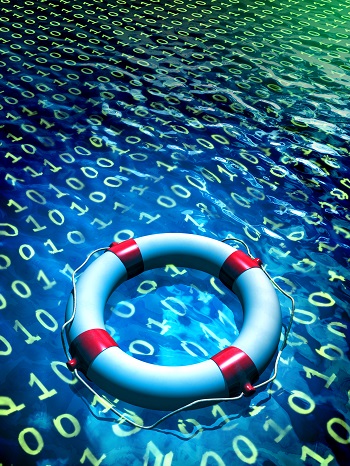There are plenty of statistics out there about disaster recovery. The Federal Emergency Management Agency (FEMA) says 65% of businesses fail within two years of a disaster, while the Small Business Administration (SBA) says it’s 90%. That’s a wide range, but it doesn’t matter too much, because either one is terrible.
Businesses do fail during disasters, and they do it at a high rate because it causes all kinds of major challenges. Employees may not be able to report to work or may not know where or how to report if the company building is inaccessible and communications are cut. Your customers might not be able to pay you, especially local ones who faced the same disaster. And your business may face all sorts of new expenses that weren’t there before the disaster hit. That’s why a disaster recovery plan is so important.
Another major reason that companies fail after disasters is data loss. Whether it’s a hurricane, a flood or an electrical fire, if you lose customer data, billing data, vendor data and the configuration of all your systems, it’s extremely hard to recover. It’s critical to have your company data backed up to an off-site location so that if this happens to you, you can restore it.
A New Type of Disaster
Companies also face a new type of disaster that we didn’t have to worry about ten years ago, and it’s causing tons of data loss. It’s not the pandemic – that’s causing plenty of problems, but not very much data loss. The new data loss disaster is ransomware. A new infection happens every 14 seconds, and most of these are small- and medium-sized businesses.
And while many businesses think of ransomware as a data-loss risk, it can impact a business in many of the same ways a natural disaster can. Just like a hurricane, ransomware can impact communication with your employees – it can shut down email servers and encrypt employee contact data stored on your servers. Just like a hurricane, it can reduce customer payments, because many companies need computer access to properly process those payments.

And just like hurricanes, a ransomware attack adds new expenses that companies didn’t face the day before. It’s not just the ransom itself – until company data has been restored, nearly every essential business task also becomes more complex and time consuming, if it’s possible at all.
An Effective Backup and Disaster Recovery Plan
If you’re struck by fire, flooding or building damage, you’ll probably be able to restore your data if it was stored off-site and your backups are periodically tested to ensure they boot. Some solutions may take hours to restore your network, and others may take days, but the data should mostly be intact after restoration.
But if you’re struck by ransomware, that’s not necessarily the case. That’s because you aren’t fighting against nature – you’re fighting against a human who’s determined to make sure that the only way you can get your data back is by paying them a ransom. If cybercriminals gain access to a computer with a data backup manager, they’ll try to disable backups and disable notifications that the backups aren’t happening. Then they may wait a couple of months before triggering the ransomware.
If they gain access to a computer or account that has permission to modify previously backed-up files, they’ll attempt to corrupt those, too. To avoid detection, they may even corrupt your most important database file backups, while making sure the backup image still passes a boot test.
The only safe solution for a ransomware disaster is a backup solution that can’t modify the files it’s already sent to an external backup center. That backup solution also needs to alert users if files which are backed up regularly are suddenly stopped from backing up.
It’s important that this not be managed by the client PC – it needs to be managed by a limited-access server. This way, even if the client PC gets compromised, the cybercriminal can’t corrupt backed up files, disable backups, or disable notifications of halted file backups.
There are several large companies selling business disaster recovery backup services. They have clients attempting to restore their data to avoid a ransomware payment every day. If they haven’t figured out some novel ways to protect clients from this rapidly-growing threat, it’s probably time to consider a new solution.
To learn if your backup solution passes the test, call us at (919) 600-5190 or email us at Team_WingSwept@WingSwept.com.
